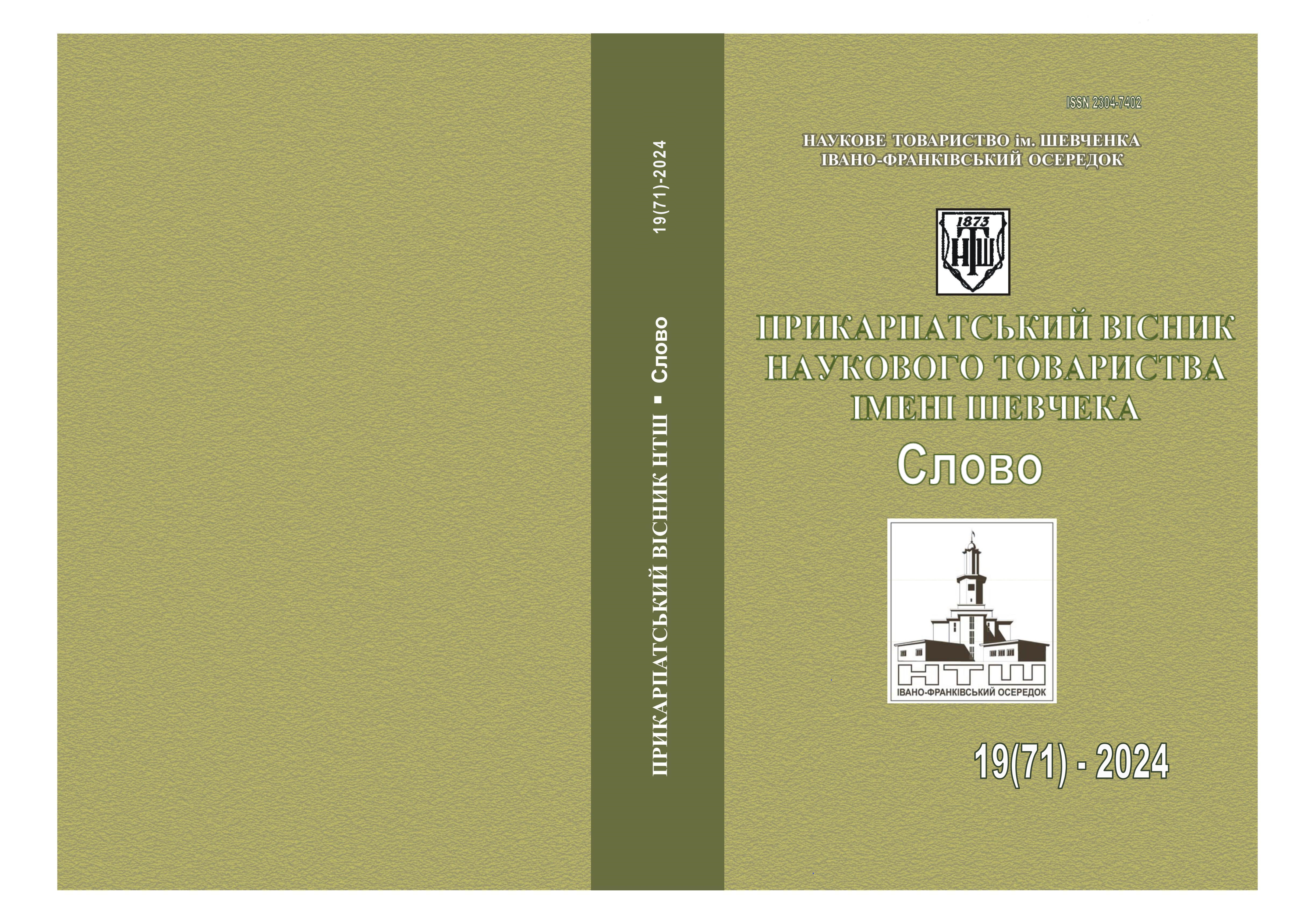THE LINGUOCULTURAL ASPECTS OF THE CONCEPTS “TREMBITA” END “FLOIERA” IN THE HUTSUL SUBDIALECT
DOI:
https://doi.org/10.31471/2304-7402-2024-19(71)-356-363Keywords:
the Hutsul subdialect, derived words, the concept of “trembita”, the concept of “floiera”, the language picture of the world.Abstract
The article explores the linguocultural aspects of the concept of “trembita” and “floiera” in the Hutsul subdialect. The material used for the article is the novel “Dido Yvanchik" by P. Shekeryk-Donykiv and the dictionary “The Hutsul Subdialect Lexicon and Phraseology in Ukrainian Literary Language.”
The trembita (trymbita) is a wind musical instrument, a wooden pipe without valves up to three meters long or more, made of spruce wood, wrapped in birch bark.
The sound of a trembita in early spring announces the departure of shepherds with their cattle to the pastures. During the grazing season, with the help of a trembita, the watah (a senior shepherd) instructs other shepherds to herd the sheep for the night into the staia (a temporary dwelling in the pasture).
A trembita is used to accompany carol singing to glorify the Lord. It is with a trembita that people are invited to sing carols. Before starting the caroling, all the carolers used to gather near the church and, going around it, danced, asking for good harvests and other gifts of nature. During the dance they played the trembita.
Hutsul shepherds expressed their gratitude to the Sun God with the melody of a trembita. A trembita used to protect not completely Christianized pagan Hutsuls from any calamity, evil power, mythical creatures.
A trembita acts as a symbol of eternal life: it is used to announce death and escort the deceased to the afterlife; it is a means of spiritual union with ancestors. Although a trembita often announces the departure of a person to the afterlife, this musical instrument also symbolizes the Hutsul vitalism. A trembita call is also heard when guests are invited to a wedding.
The floiera (floiara, floiira) is an open-ended long pipe (60 cm), a kind of an open-ended notched flute with six holes. The floiera stands as a symbol of the preservation of age-old Hutsul traditions, a spiritual memory and a means of communication with ancestors. It is noteworthy that in the funeral rite, people were invited to say goodbye to the deceased with the melodies of both a floiera and a trembita. During a funeral, with the sounds of trembitas and floieras, people paid their respects to the deceased for the last time.
The concepts of trembita and floiera in the Hutsul worldview are multifunctional primarily from an axiological point of view, as they reflect the specific features of the spiritual life of Ukrainians who live in the mountains.
References
Скаб М. В. Закономірності концептуалізації та мовної категоризації сакральної сфери : монографія. Чернівці : Рута, 2008. 560 с.
Кононенко В. Концепти українського дискурсу : монографія. Київ–Івано-Франківськ : Плай, 2004. 248 с.
Венжинович Н. Концептуальна й мовна картина світу як похідні етнічних менталітетів. Лінгвістичні студії: зб. наук. праць. Вип. 14. Донецьк : ДонНУ, 2006. С. 8–13. http://litmisto.org.ua/?p=7484 (дата звернення: 15.01.2024).
Шекерик-Доників П. Дідо Иванчік : роман. Верховина : Редакція журналу (видавництво) “Гуцульщина”, 2012. 496 с.
Шекерик-Доників П. Дідо Иванчік / переклад літературною мовою Івана Андрусяка. Брустурів : Дискурсус, 2020. 832 с.
Гуцульська діалектна лексика та фраземіка в українській художній мові : словник: у 2 т / відповід. редактор Василь Ґрещук. Івано-Франківськ : Місто НВ, 2020. Т.2. 467 с.
Етимологічний словник української мови : у 7 т. / Ред. кол.: О.С. Мельничук (гол. ред.) та ін. Київ : Наукова думка, 1983. Т.5: Р–Т / Уклад.: Р.В. Болдирєв та ін. 2006. 704 с.
Думчак І.М. Лінгвокультурологічні аспекти концепту "ватра" в гуцульському говорі. Закарпатські філологічні студії. 2023. Випуск 27. Том 2. С.18–23.

